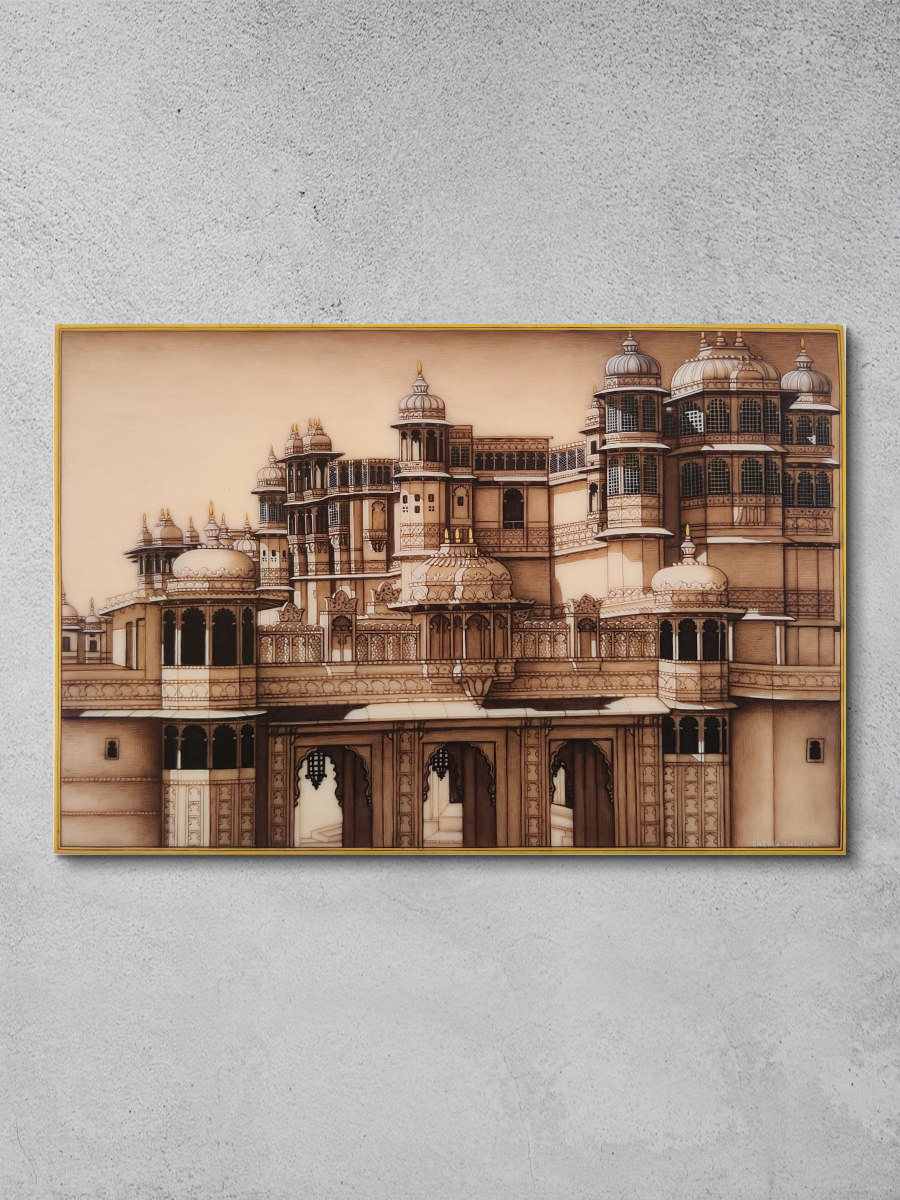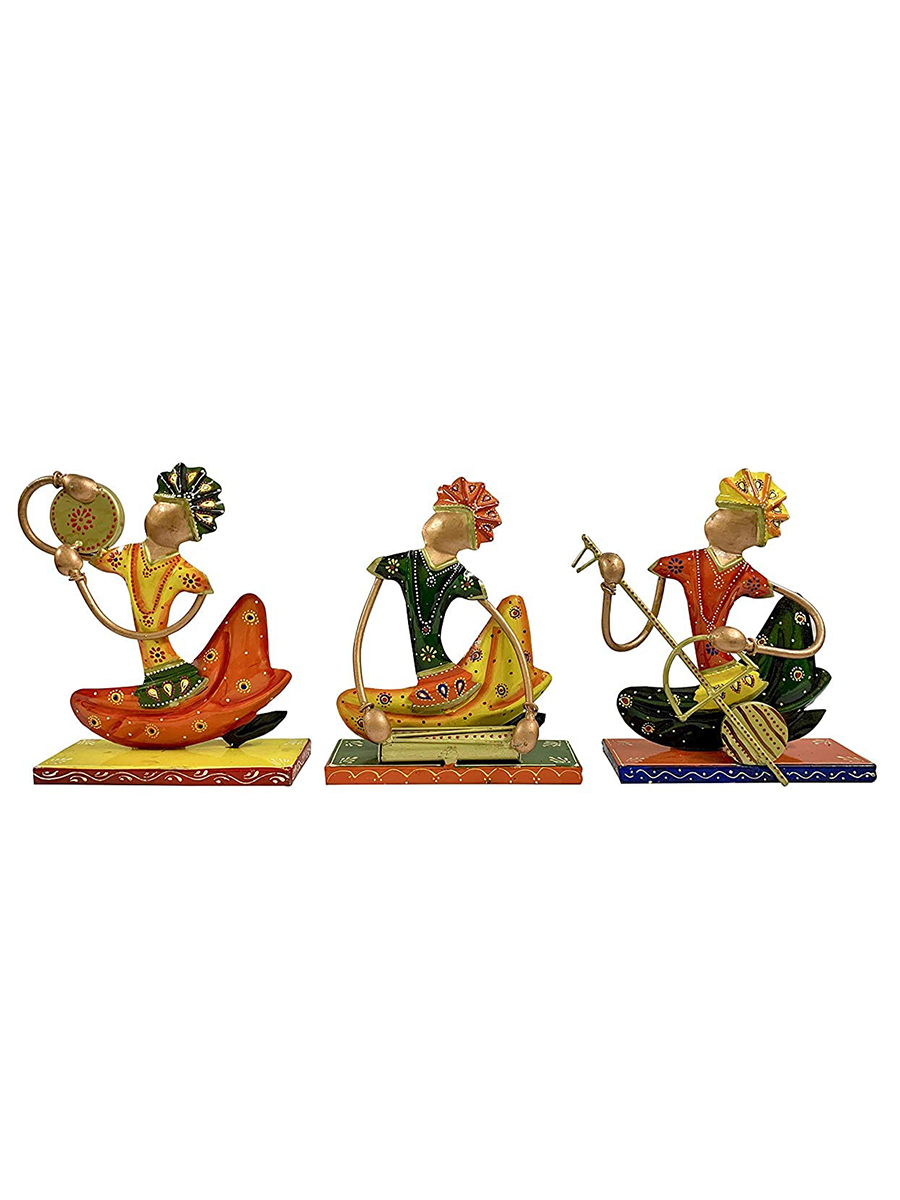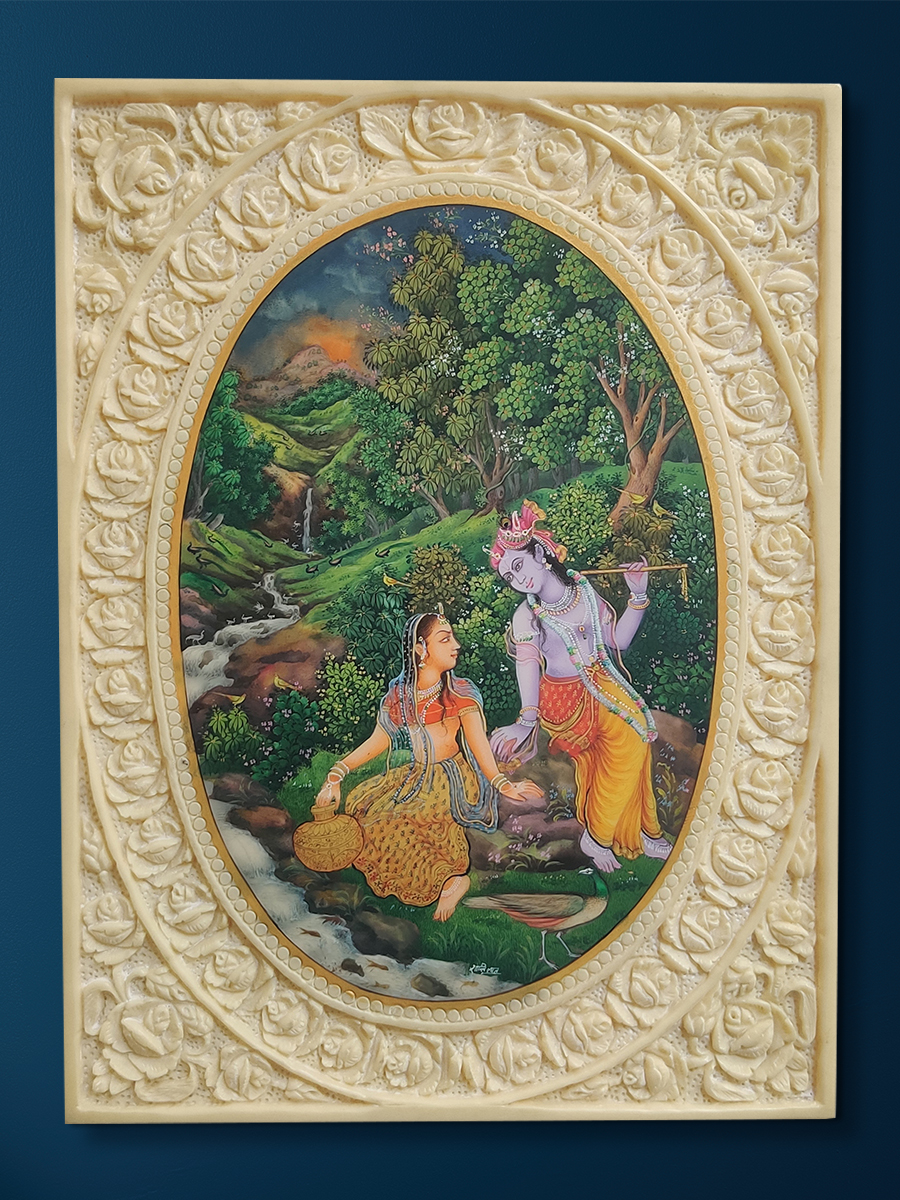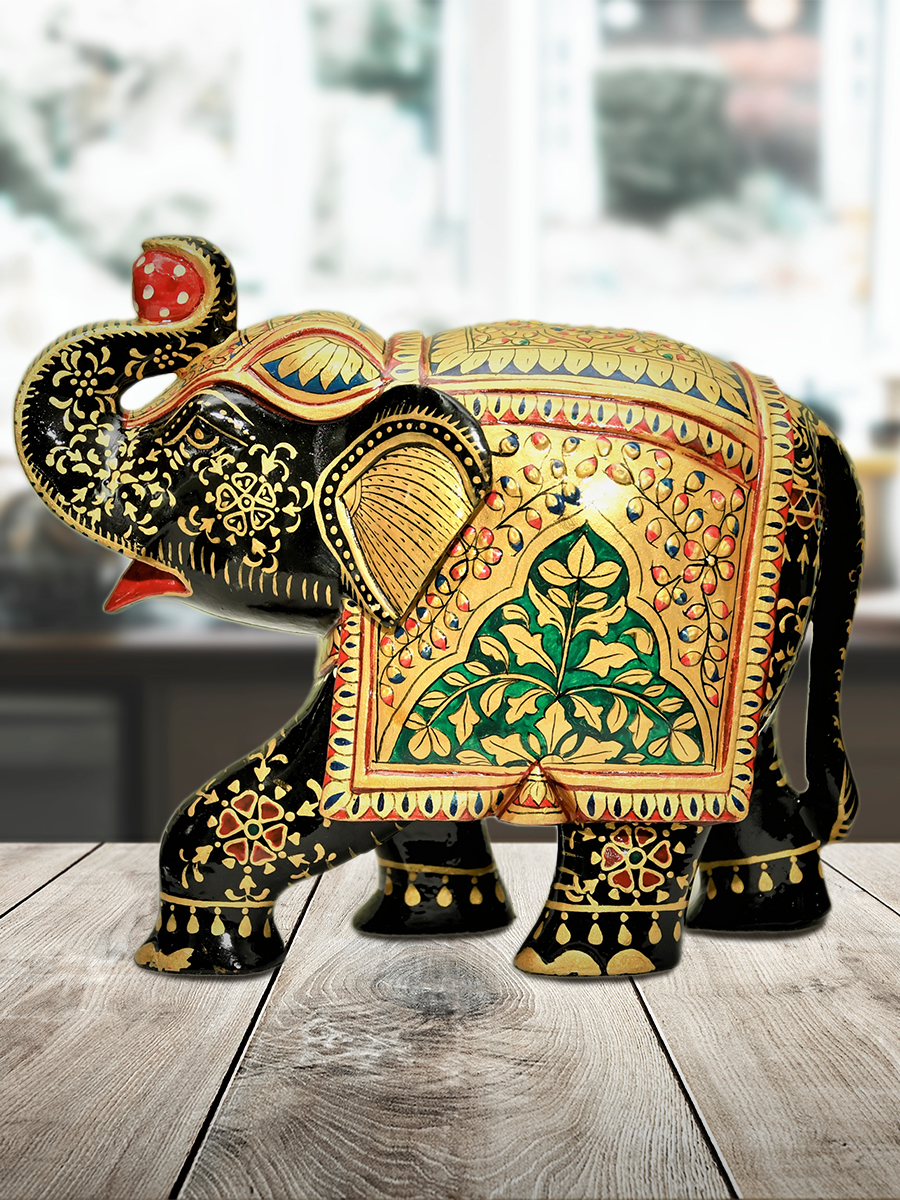Colours of Rajasthan: A Guide to Traditional Handicrafts
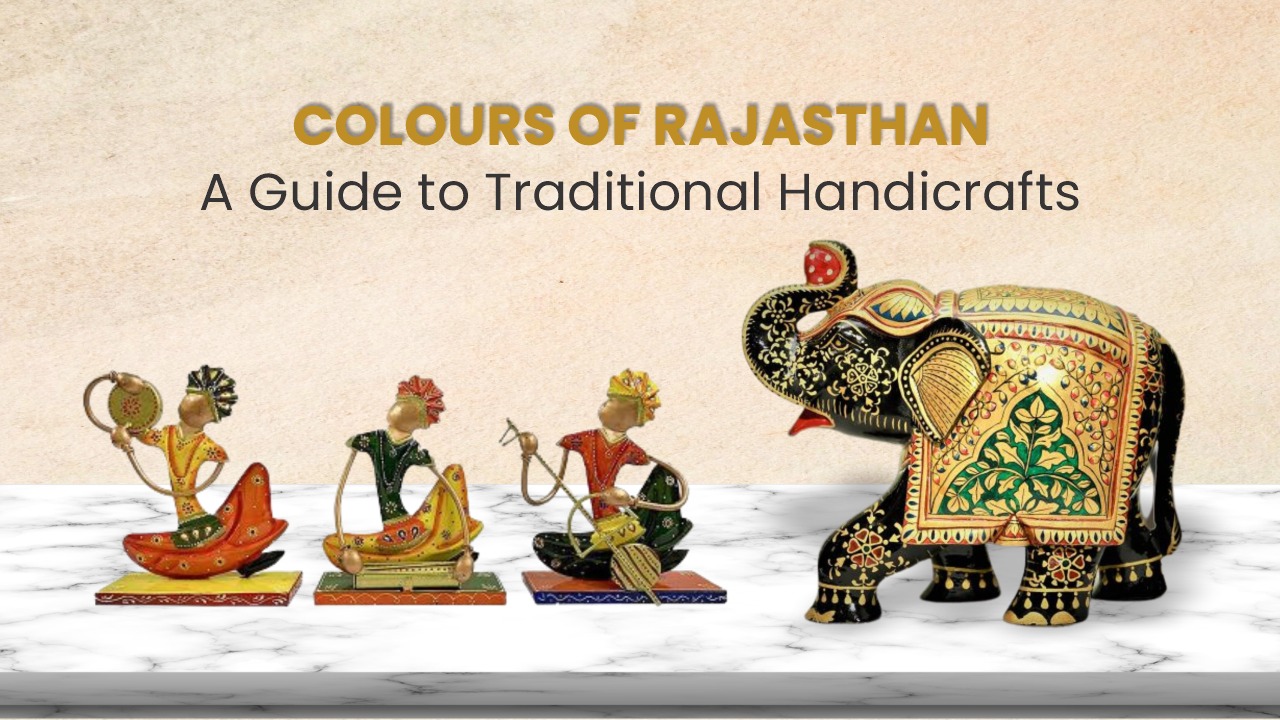
“Rajasthan”, the name itself announces it as the place of kings! Among the states of India it is one of the crest-jewels which beckons not only with its royal wonders but also with a vivid array of history, culture, and Traditional Handicrafts tradition. Standing proudly in the northwestern corner of the Indian subcontinent, the enchanting state is often referenced as a historical and cultural treasure trove, and rightfully so. It is a place where time seems to have stood still, thanks to the timelessness of the age-old customs and the arts and crafts that have been passed down over centuries.
Traversing Rajasthan’s sun-soaked deserts, labyrinthine cities, and opulent palaces and forts, is the discovery of a world where tradition and artistry are woven into the very fabric of everyday life. From the bustling markets of Jaipur, where the aroma of spices and the clink of bangles fill the air, to the serene villages of Jodhpur, where artisans quietly shape their creations, to the magic of Bikaner, Jaisalmer, Kishangarh and many more, the state is synonymous with handcrafted heritage. These handicrafts, beyond decorative objects, are living stories that bear the legacy of the artisans who have been breathing life into them for generations.
Here is a choicest selection of some of the most enchanting handicrafts from this land of kings!
Handmade Rajasthani Painting of the City Palace of Udaipur - Dawn
Terracotta & Ceramics
Rajasthan has given birth to a myriad of terracotta styles and techniques, each carrying its own unique history and story.
Terracotta pottery dates back to the Harappan civilization (Indus Valley Civilization), which existed from approximately 3300 BCE to 1300 BCE. Terracotta was used for crafting figurines and seals, storage jars and ornate pieces. The material was even employed in crafting children's toys. Today also, it continues to percolate every aspect of a Rajasthani’s life, right from the humble jug of water to the venerated idols of deities. Terracotta pottery is celebrated for its rustic and earthy charm which is adorned often with traditional designs and motifs reflective of the local culture. The villages around Jaipur, Alwar, Bharatpur, and Jaisalmer stand out for their terracotta craftsmanship.
Blue Pottery is a unique and iconic ceramic tradition in Rajasthan, also having its origins in Persia. The craft was introduced and flourished in Jaipur during the reign of Maharaja Sawai Ram Singh II, during the 14th century CE. As its name suggests, this pottery is characterised by its vibrant blue palette that blends in shades of white to create intricate floral patterns. The specialty of blue pottery is that it uses a blend of quartz and glass instead of clay which lends its unique translucent quality. Blue Pottery is eco-friendly and uses no harmful chemicals as it thrives in the bustling bazaars of Jaipur where the artisans diligently pass down their skills from one generation to the next.
Handmade Table Décor of Grooving Rajasthani Musicians (Set of 3)
Carpets & Rugs
The roots of carpet weaving in Rajasthan can be traced back to 16th and 17th centuries, bearing multiple influences from the Persian, Mughal, and native traditions. Though it was introduced in the Mughal times, over the years, local artisans adeptly incorporated these weaving techniques into their distinctive styles. Notably, the cities of Jaipur, Bikaner, and Tonk have emerged as prominent centres for carpet production in Rajasthan. The carpets are either hand-knotted, hand-tufted or hand-woven.
Patterns are an essential component of carpets and rugs, especially the hand knotted ones. These designs encompass a wide array, including floral motifs, arabesques, rhomboid shapes, and occasionally even animal representations. With different levels of stylization and artistry, they bear the cultural imprints of the region. Thus, each carpet or rug in Rajasthan tells a story. For instance, the "Tree of Life" pattern often found in Rajasthani carpets symbolises the cycle of life and nature's abundance. Some of the other patterns include the dove, peacock, hourglass, comb, camel and pomegranate.
Carpets are typically woven using wool, cotton, and silk. Wool, in particular, has consistently served as the fundamental material for knotted carpets. The type of wool employed varies and may include sheep wool, lamb's wool, camel, or yak hair, depending on the region where the carpets are crafted. Silk is reserved for creating some of the most exquisite and lightweight carpets, adding an element of luxury to the weaving process.
Woodwork & Stonework
Rajasthan's wood and stone artisans infuse modernity with tradition as their work graces homes, hotels, and public spaces worldwide.
Handmade Rajasthani Miniature Painting of Radha, Krishna on banks of river Yamuna in 24K gold
The history of woodwork in Rajasthan is deeply rooted in the region's royal heritage. The Rajput rulers provided rich patronage to the skilled artisans to adorn their craftsmanship palaces, havelis (mansions), and temples with skilled craftsmanship. For instance, the Shekhawati Rajputs patronised the creation of stunning wood-carved facades seen in the grand havelis of Shekhawati region of Rajasthan. These woodworkers or "Suthars," have passed down their craft of intricately carving wood into furniture, doors, and decorative items for generations. Traditional motifs like floral patterns, peacocks, and geometric designs.
Stonework in Rajasthan is equally renowned and is reflected in the magnificence and grandeur of the region's architecture such as the pink sandstone of Jodhpur and the white marble of Jaipur. The growth of the craft has been facilitated by Rajasthan’s rich geological diversity that provides a plethora of stones, including marble, sandstone, limestone and granite, which have been used to create magnificent structures and sculptures. Everyone recognizes it for its marble craftsmanship with the world-famous Taj Mahal, having its roots in Rajasthan's Makrana marble. Stones are meticulously sculpted and carved to create temple facades, sculptures, and intricate jali (lattice) work.
Miniature Paintings
Rajasthan's miniature painting tradition is a visual delight of intricate artistry and storytelling, with a deep connection to the region's history and culture. The exquisite detailing, vibrant colours, and poetic narrative of miniature paintings possess a rich history dating back to the 16th century. Once again, it was the Rajput kings who patronised and encouraged this art form which also drew inspiration from the Mughal and Persian traditions. These paintings showcased royal courts, mythology and daily life with equal panache to narrate tales of love, valour, and devotion, showcasing the royal courts, mythology, and daily life.
The colours are traditionally prepared from minerals, vegetables, precious stones, and even conch shells, lending the paintings their enduring vibrancy. Apart from the fine brushwork, miniature paintings also incorporate semi-precious gemstones as seen in this miniature painting on Planet Handcrafted with the motifs of an elephant for luck, horse for power and camel for love.
The chitrakars (artists) from different regions within Rajasthan have their unique styles. The Mewar school in Udaipur is known for its detailed compositions, the Marwar school in Jodhpur often depicts love stories and royal life, while the Kishangarh school in Ajmer is celebrated for its magical depictions of Radha and Krishna.
Hand carved wooden decor ornate gold and green elephant
A ‘Planet’ of Handcrafted Rajasthani Artefacts
As the timeless traditions of Rajasthan's handicrafts stand like luminous jewels of artistry, Planet Handcrafted, a definitive online store that curates authentic, indigenous, heritage art forms, has taken upon itself the noble task of not merely celebrating these crafts but actively participating in their preservation and promotion. 'Planet Handcrafted' is more than just an online platform; it's a guardian of heritage. With every click and every purchase, it helps sustain the livelihoods of countless artisans and keeps the vibrant heart of Rajasthan beating. Together, we are weaving a colourful tapestry of tradition, innovation, and sustainability, where the artisans of Rajasthan can continue to tell their stories through the colours, shapes, and textures of their extraordinary craftsmanship.


 USD
USD  GBP
GBP EUR
EUR AED
AED



